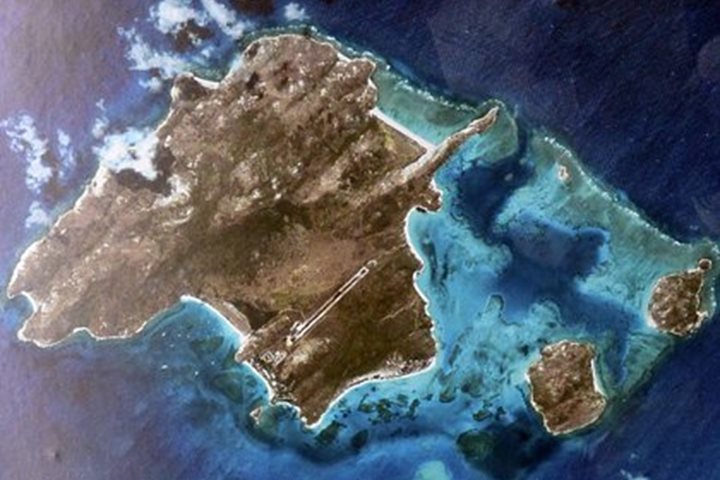There are few natural structures as overwhelmingly large and complex as the Great Barrier Reef. The intricate maze of islands, reefs, and cays stretches for nearly 1,500 miles (2,300 km) along the coast of Queensland, comparable to the length of the US West Coast.
We decided on a small, unnamed reef just south of Bligh Reef in the far north region of the GBR for our day’s activities. As the tide dropped all morning, the increasingly exposed outer reef served as a natural breakwall from the southeast trade winds and wind chop. Snorkelers suited up and divers donned their gear for a full day in the water. The glass bottomed boat was even launched and took full advantage of the protection afforded at low tide for a dry look at the reef and its inhabitants.
There was certainly something different about the reef we experienced today. The number of large, predatory fish we encountered was more than we’ve seen the whole trip. On most coral reefs, including most of those we’ve visited thus far, large and/or predatory fish are the first denizens to be caught by humans, throwing the whole ecosystem out of balance. The massive humphead parrot fish, traveling in schools and looking like the buffalo of the reef, have been conspicuously absent. Until today. Feeding on the coral itself, these fish are responsible for much of the white sand we spent the afternoon relaxing on and are important players in reef health. Some snorkelers, divers, and cruisers also had a great look at bumphead wrasses, sometimes called Napoleon or Maori wrasse. Nearly every Indo-Pacific reef should have this huge teal fish, yet their numbers are on the decline as they’re a valuable fish in the live-seafood trade in Asia.
As we drifted along effortlessly watching sharks and giant sweetlips in the strong incoming tide, the reef streaked past in a blur of fins and coral. It’s a busy place with innumerable players and complex interactions. Lucky for us, this particular patch of biogenic rock was a great example of a healthy, dynamic reef.






